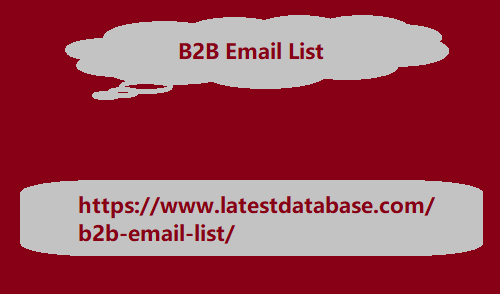Post by account_disabled on Jan 23, 2024 10:35:10 GMT
After the audit, we will analyze the level of SPAM links with the SEMRush or Link Affinity tools . These tools may consider some low-quality links as “toxic” when in fact they are not. For example, we may receive a link from a newly created digital marketing blog and the tool marks it as “toxic”, when in reality it is not because it is natural and comes from a with a related topic. Therefore, it will be advisable for you to identify and mark them manually. The next step will be to ask the webmaster to remove them or tell not to take them into account. As? I explain it to you in the article “How to eliminate toxic links with SEMRUsh”. Identify URLs with the most potential. Next, analyze which urls on your website have the
greatest potential, including the home . That is, the ones that are most interesting to position. Once you have seen this, analyze which ones have the greatest opportunity to position themselves. The SEMRush tool will be very useful for you. Defines thematic categories. Once all of the above has been analyzed, it is time to start drawing a map of themes related to the theme of the website to be positioned, beyond the product. That is, developing an ecosystem of themes. For example, if our website is an online apple store, my ecosystem is not simply B2B Email List related to “apples”. It goes much further: “recipes”, “food”, “health”, “sports”, “recipes”… It is about defining in which topics we can look for opportunities to generate quality links for our project. Content planning Yes, link building is closely linked to content marketing and personal branding . As we have seen previously, rewards

web s with EAT. Therefore, draw up a content strategy that helps the company team as experts in their field. And this, as we will see later, in addition to authority, generates links. These contents must support the main urls that you intend to position. Search for relationships After defining the themes that best define your project, it is time to select those websites that, due to their authority, credibility and trust, you are interested in relating to and that may be interested in linking to you. I'll give you an example. If you are positioning an apple company, and you have written an article about the nutritional contributions of this fruit based on
greatest potential, including the home . That is, the ones that are most interesting to position. Once you have seen this, analyze which ones have the greatest opportunity to position themselves. The SEMRush tool will be very useful for you. Defines thematic categories. Once all of the above has been analyzed, it is time to start drawing a map of themes related to the theme of the website to be positioned, beyond the product. That is, developing an ecosystem of themes. For example, if our website is an online apple store, my ecosystem is not simply B2B Email List related to “apples”. It goes much further: “recipes”, “food”, “health”, “sports”, “recipes”… It is about defining in which topics we can look for opportunities to generate quality links for our project. Content planning Yes, link building is closely linked to content marketing and personal branding . As we have seen previously, rewards

web s with EAT. Therefore, draw up a content strategy that helps the company team as experts in their field. And this, as we will see later, in addition to authority, generates links. These contents must support the main urls that you intend to position. Search for relationships After defining the themes that best define your project, it is time to select those websites that, due to their authority, credibility and trust, you are interested in relating to and that may be interested in linking to you. I'll give you an example. If you are positioning an apple company, and you have written an article about the nutritional contributions of this fruit based on
